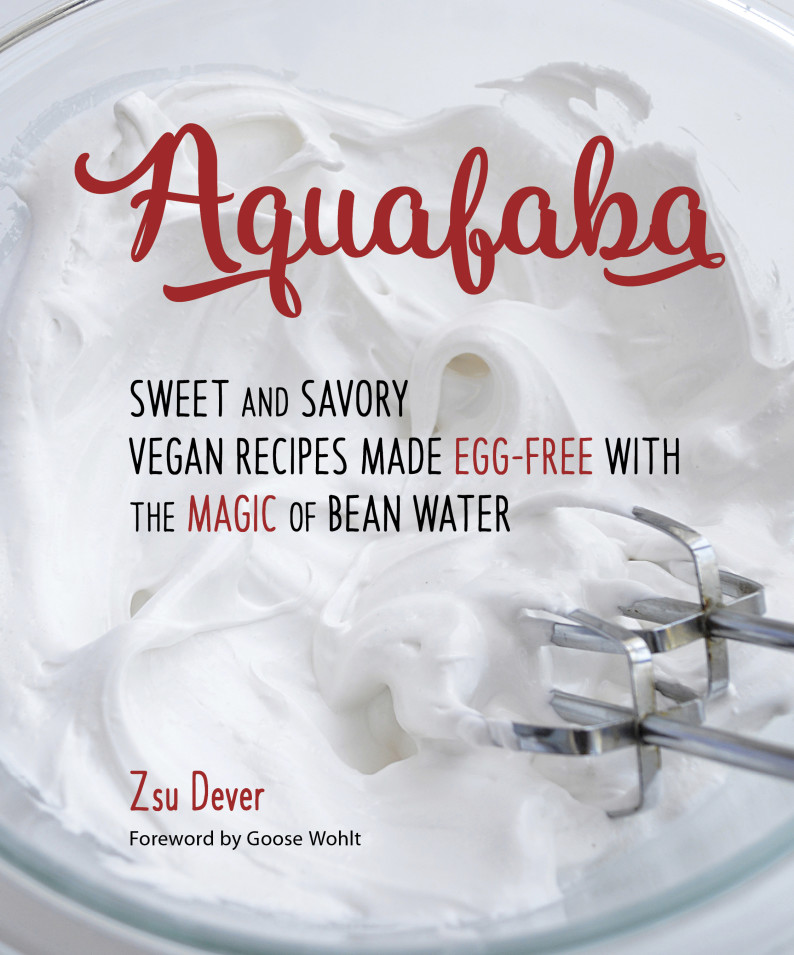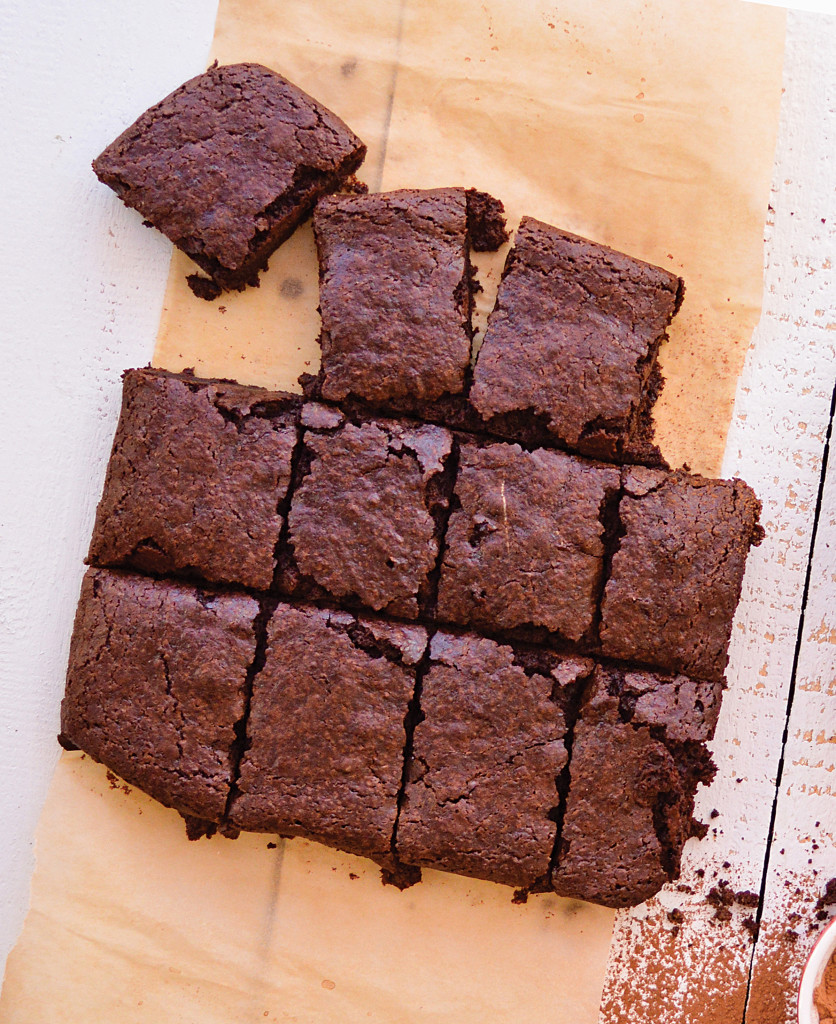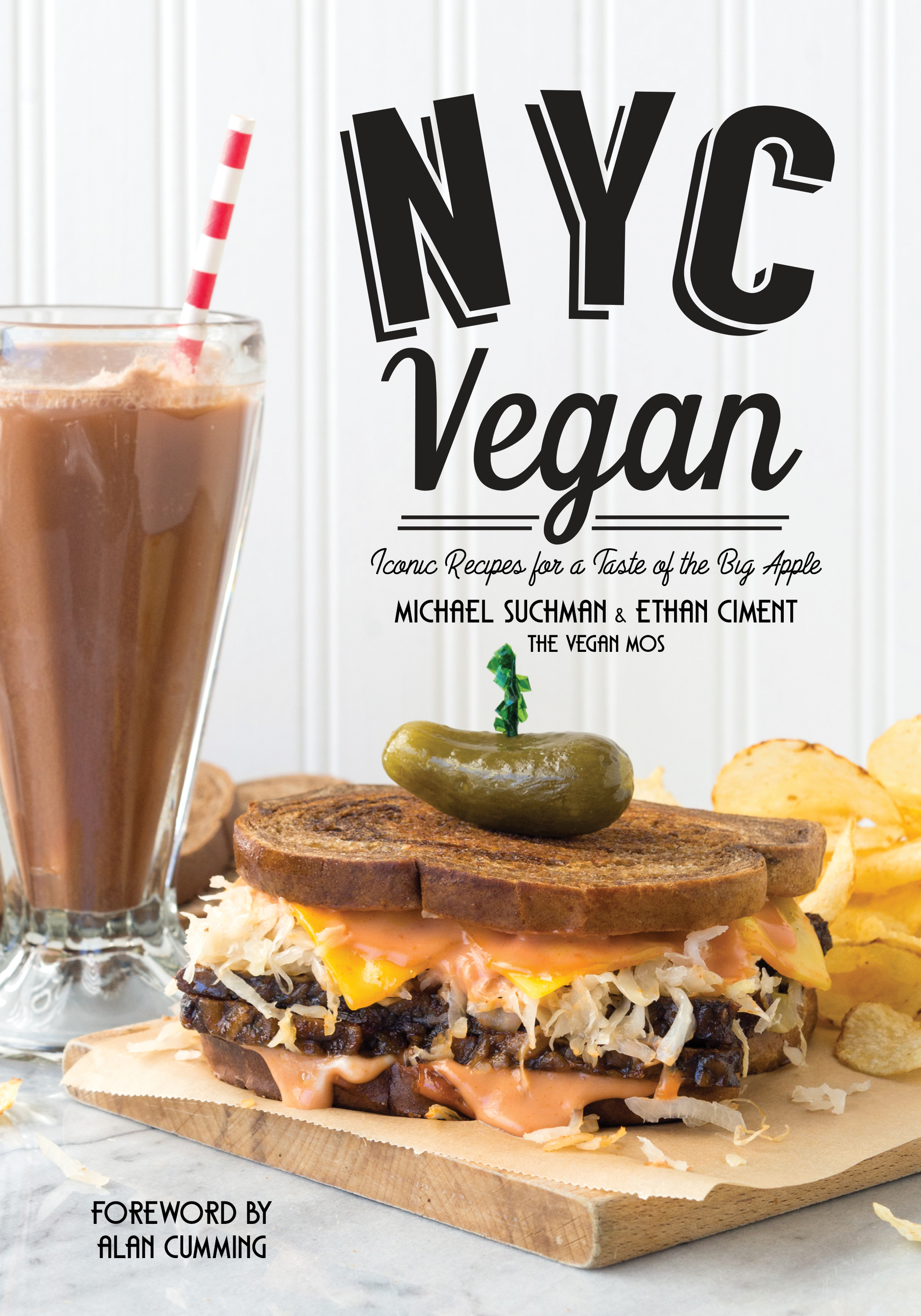Aquafaba is both the fancy name for the water that comes in a can of beans and the title of the new cookbook by Zsu Dever. Before going into the book itself, I need to give special notice to the subtitle of the book: Sweet and Savory Vegan Recipes Made Egg-Free with the Magic of Bean Water. This is quite possibly the best subtitle I have ever seen, after all aquafaba literally means “bean water.” Aquafaba is filled with recipes for breakfasts, lunches, dinners, sweets, and even condiments.
In her introduction, Zsu provides some great information on aquafaba and how in March 2015, the vegan blogosphere erupted with the news that we could use the liquid from a can of chickpeas to mimic egg whites. Goose Wohlt shared his discovery on Facebook and named this liquid aquafaba. Suddenly vegans around the world were making meringues, macarons, cookies, and cakes using aquafaba. Zsu is careful to point out that while you can use the cooking liquid from any legumes, the darker the bean, the stronger the flavor, so we are better off using the liquid from lighter beans like chickpeas or cannellinis. Zsu rounds out her introduction advising us that anyone new to using aquafaba should start with her recipe on how to make aquafaba from canned beans to learn how to whip it properly. Once you do that, move on to simpler recipes like Meringue Cookies or Featherlight Chocolate Mousse. Lest you think aquafaba is only for meringue, Aquafaba also has recipes that use this liquid as an emulsfier for sauces and dressings, as part of egg-like dishes such as quiches and frittatas, and even in candies, whipped toppings, and ice cream. In Aquafaba, Zsu teaches how to use the liquid we used to simply pour down the drain without a second thought.
Following the introduction, Zsu give a primer on aquafaba noting that while it is best if you make it fresh from cooking chickpeas, in a pinch, using the liquid from a can of beans is just fine. She is careful to note that the liquid from canned beans can often yield a salt aquafaba, so that is something to take into consideration. With the basics about making and whipping aquafaba, Zsu breaks out the recipes and shows all the wonders this liquid can do. Just check out this brownie recipe for chewy fudge brownies:
CHEWY FUDGE BROWNIES
Rich, chocolatey, and chewy on the inside and lightly crisp outside, these brownies are sure to satisfy any chocolate craving. Make sure to use Dutch-process cocoa powder and bake the brownies just until a test toothpick is still holding onto a few crumbs. The aquafaba acts as an emulsifier and light leavener in this decadent dessert. (from Aquafaba, copyright © 2016 by Zsu Dever. Used with permission.)
Meringue
1/2 cup aquafaba (see Note)
1/4 teaspoon cream of tartar
2/3 cup granulated organic sugar
1/3 cup packed light brown sugar
Fudge Brownie Batter
3/4 cup unsweetened Dutch-process cocoa powder
3/4 cup unbleached all-purpose flour
1/2 teaspoon sea salt
1/2 teaspoon baking powder
1/4 cup neutral canola or other neutral oil
2 tablespoons nondairy milk
2 teaspoons pure vanilla extract
- Meringue: Prepare an 8- x 8-inch square pan with a sheet of parchment paper hanging over one set of opposite sides of the pan to form “handles” for removing the baked brownies later. Preheat the oven to 325°F. Add the aquafaba and cream of tartar to the bowl of a stand mixer. Using a whisk, whip the aquafaba for 10 seconds. Using a balloon whip attachment, whip the aquafaba on medium speed for 5 minutes. Increase the speed to medium-high and continue to whip for another 5 minutes, or until the aquafaba can hold firm peaks. Add the granulated sugar and brown sugar (add the granulated sugar first and then the brown sugar), 2 tablespoons at a time, over the course of 3 minutes and continue to whip for an additional 2 minutes, or until the sugar has dissolved and the meringue is climbing the side of the bowl.
- Batter: Sift together the cocoa, flour, salt, and baking powder in a medium bowl. Add the cocoa mixture, sifting it again, right on top of the meringue. Add the oil, milk, and vanilla directly on top of the cocoa mixture and fold the mixture until a pourable batter forms without any obvious air bubbles.
- Add the batter to the prepared pan and bake the brownies until a toothpick inserted into the middle comes out clean with only a few moist crumbs, about 30 to 50 minutes. Do not overbake (but note that glass baking dishes will need a longer baking time). Run a knife around the edges of the pan and, grasping the overhanging parchment paper, transfer the brownies to a cooling rack. Cool completely before serving.
Makes 12 small brownies
Note: Although aquafaba is best if homemade using the recipe provided in the book, you can use aquafaba from canned chickpeas. Use the organic, low-sodium, canned chickpeas and strain off the liquid into a measuring cup using a fine mesh strainer. Note the amount of liquid you acquired, then add it to a medium saucepan and bring to a boil. Reduce to a simmer and cook until the liquid reduces by 1/3. Cool the aquafaba completely before using.
At the end of Aquafaba Zsu gives a special shout-out to the Facebook group that was a haven for the early users of aquafaba, “Vegan Meringue – Hits and Misses.” Thank you to all of you pioneers of bean water. The next time you are cooking up a batch of chickpeas, or draining a can of cannellini beans, save the liquid and get cooking with Aquafaba.
Enter now for your chance to win a copy of Aquafaba! a Rafflecopter giveaway





